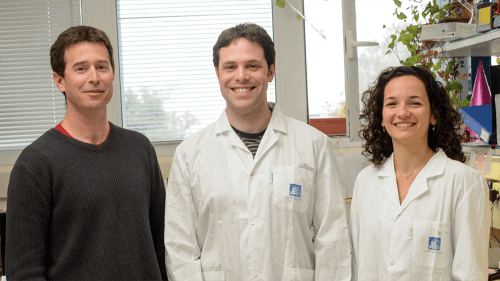Control switches composed of RNA, collectively called riboswitches or riboregulators, are short coils of RNA that are attached to messenger RNA. They work like sensors, which turn on or off when they detect a certain level of a specified substance, such as a certain amino acid, and thus they control the expression of the messenger RNA to which they are attached.

If we humans want to win our ongoing race against bacteria, which are constantly developing new ways to overcome the antibiotics we throw at them, we must find advanced methods to deal with their antibiotic resistance. Now the scientists of the Weizmann Institute of Science propose to focus on the process of activating the genes that create this resistance. In a recently published study in the scientific journal Science The scientists report that they have found molecular switches, consisting of RNA molecules, which activate proteins that give bacteria resistance to antibiotics, and therefore, turning off these switches may inhibit the development of the bacteria's resistance.
Control switches composed of RNA, collectively called riboswitches or riboregulators, are short coils of RNA that are attached to messenger RNA. They work like sensors, which turn on or off when they detect a certain level of a specified substance, such as a certain amino acid, and thus they control the expression of the messenger RNA to which they are attached.
Prof. Rotem Sorek and research student Daniel Dar, from the Department of Molecular Genetics at the Weizmann Institute of Science, developed a method they called Term-Seq: using advanced techniques developed in Prof. Sorek's laboratory, such RNA switches are systematically located in bacteria, and it is possible to determine the genetic sequences of RNA an island. Using this method, the scientists discovered almost all the switches known in bacteria Bacillus subtilis, which is one of the most studied model bacteria in the world. They then tested the method on two disease-causing bacteria - Listeria and Enterococcus. These bacteria have developed a way to expel the antibiotic outside the cell, and by neutralizing it in this way they survive despite the treatment.
The question that faced the scientists - how do the bacteria know when to activate the resistance genes - and the scientists discovered that the genes that enable resistance to antibiotics were activated by means of unique RNA switches that recognize antibiotics and react to them. In fact, the scientists observed that certain RNA switches have an "on" structure and an "off" structure. The "off" structure prevents the production of the protein "pumps" that remove the antibiotics from the cell, and the "activated" structure, which appears in the presence of antibiotics, enables the production of these pumps.
Another study revealed that the main target of the antibiotic - the ribosome - is the one that "decides" when to "move the switch". When an antibiotic binds to the ribosome, it "gets stuck" on the RNA switch, forcing the switch to turn itself into an "activated" structure, and this activates the resistance gene. In other words, bacteria detect the presence of an antibiotic by monitoring its target, and this allows them to recover quickly, and get rid of the threat to them.
But here another question arose: Do other bacteria use similar signaling mechanisms to trigger antibiotic resistance? The team decided to investigate this question in different bacteria. For this, they turned to a close source - their teeth ("You will be surprised to find out how much bacteria accumulates on your teeth if you just skip brushing your teeth for one day", says Professor Sorek). After collecting the bacteria from the teeth of three team members, the scientists returned to the method they had developed, discovered several molecular switches in different bacteria, and proved that even bacteria that are considered friendly contain a wide variety of genes that enable resistance to antibiotics.
"While antibiotic resistance genes take many forms, the RNA switches that control them actually behave in the same way, and these are only found in bacterial cells," says Prof. Sorek. "Because of that, they could, in the future, be used as potential targets for drugs."
Also participating in the research were: Maya Shamir from Prof. Shurk's laboratory, Dr. Noam Stern-Ginoser from the Department of Molecular Genetics, and Prof. Pascal Kosser from the Pasteur Institute, France.
